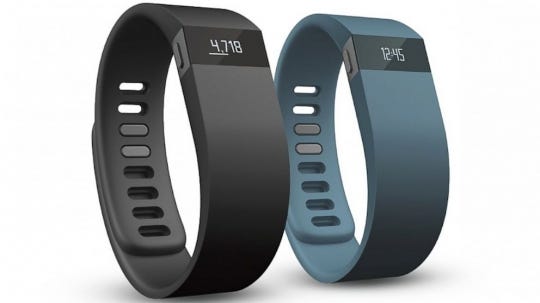November 14, 2013
Competition has become fierce in the emerging fitness tracking market, with most companies in this space continually iterating new versions of their devices, which are essentially glorified pedometers. The pace of development in the sector mirrors that of the general tech sector, which debut new products annually or occasionally at a faster clip. Many of the advances in the field target usability, design, and new product features.
While the rate of technological evolution is brisk, the products typically don't fall under the purview of FDA. The agency intends to only regulate apps and related products that turn smart devices into de facto medical devices. (One exception can be found in BodyMedia's Link and Core armbands, which are more-sophisticated devices and are registered with the FDA as Class II medical devices.)
The evolution of the sector is apparent by looking at the latest products such as the Fitbit Force and the Jawbone UP24.
The Fitbit Force, for example, is itself is an upgrade of the Fitbit Flex.
|
The Fitbit Force device includes smartwatch-like features but doesn't offer much new in terms of health tracking. |
One of the first players in the personal health tracking market, Fitbit launched its first product in 2008--a wearable device that many users reported accidentally putting into washing machines. The company's latest device, which is worn on the wrist, serves as a smartwatch of sorts. The Fitbit Force has an OLED screen that can tell the time and provide biometric information to users. In addition, the latest version of the company's device features an altimeter. Battery life improvements have also been made. In one test by reviewers, the device ran for more than 10 consecutive days without the need for a recharge.
In addition, the Fitbit Force includes call notifications, allowing users to interact with the device with a smartphone. While this feature isn't yet available, the company has promised to include it in future firmware upgrades. The service will provide Caller-ID functionality, enabling users to see who is calling their smartphone by looking at the Fitbit screen.
That said, the Fitbit Force doesn't offer any groundbreaking new technologies for users. While well-designed, it's yet another interaction of the basic fitness tracker that can monitor sleep movements and can help users track their steps during the day. The device retails for $130.
Jawbone, too, is taking its own baby steps. Its UP24 includes new hardware and Apple iOS-based software. Through Bluetooth Smart, it provides continuous tracking and monitoring, and it provides feedback, notifications and challenges toward new fitness and diet goals. fitness and diet goals.
Now, Fitbit, Jawbone and others will be competing directly with the likes of Apple, other smartphone makers, and app developers. An app named "Moves" harnesses the motion tracking capability of the iPhone 5s' M7 chip, to determine steps taken and other metrics. It can determine whether the user is walking, running, or is in a vehicle. The functionality works even when the phone is in sleep mode.
The ability of smartphones to track the users' motion could end up being a substantial threat to the likes of Fitbit, Jawbone, and UP, as it brings similar functionality offered by those devices directly to a device many users already carry in their pocket.
Brian Buntz is the editor-in-chief of MPMN. Follow him on Twitter at @brian_buntz and Google+.
About the Author(s)
You May Also Like



